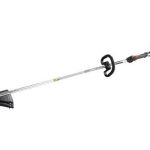When a homeowner sees a weed sprouting from his or her lawn or garden, the common inclination is to grab a spade and dig it out or get the weed repellent and spray it away.
Well, don’t be so quick with that spade or that spray gun. Some weeds are actually good for your lawn or garden.
First, plants need nitrogen. It helps them survive. However, most nitrogen naturally appears as a gas, which is not available to plants. In order to provide plants with the nitrogen they need, you have to rely on nitrogen-fixing plants. These plants have root nodules that allow them to grab nitrogen from the air and then store it in their roots. They, in turn, pass the nitrogen on to other plants when they die and their roots decompose.
In addition, some types of weedy trees and shrubs are a great source of nitrogen. They include sea buckthorn, broom, alder, locust trees, and Russian olives. When the older roots of these bushes die, they release nitrogen into the soil.

Dandelion is an example of a weed that draws nutrients to the soil surface and is edible.
(Courtesy:Mike_0220 at flickr.com)
Second, deeply rooted weeds like docks, dandelions, pigweed, and thistles can be beneficial. They draw hidden nutrients like trace minerals to the soil surface. They help shallow-rooted ornamental plants to receive these nutrients that may otherwise be out of reach. The deep-rooted weeds also break up compacted soil resulting in improved water absorbency and better soil texture.
Many gardeners who know about these weeds benefits often include them in compost. They leave these weeds alone through the growing season and then harvest them and put them in compost before they start to flower or seed. They also dig up the roots at the end of the season. However, it is advised that if you do include them in compost, make sure they don’t survive in the finished compost. Some advise that you put the harvested roots in the sun for about a week so that they dry out. You can also soak the roots in a bucket of water until they ferment and then add them to the compost.
Third, some weeds serve as good ground cover plants. The roots of ground cover plants stabilize the soil and prevent erosion and loss of nutrients from the topsoil. The stems and leaves also offer shade that helps to keep the ground moist and reduce the need for watering.
A good ground cover of weeds can also help in weed control. Weeds including purslane or dead nettle that are tight matted can prevent invasive weeds from taking root.
Fourth, believe it or not, some weeds are edible. These weeds include lamb’s quarters, yellow dock, dandelion leaves, purslane, chickweed, and sorrel. They have two or three times the nutritional value of spinach or Swiss chard.
Steaming or sautéing these weeds remove the bitter aftertaste that may be present when they’re raw. You can then use them in soups, stews, sauces, or as a simple side dish.
Other weeds considered to be tasty include:
· Clover, the leaves and blossoms of which can be used to make tea.
· Plantain leaves can be steamed.
· Sorrel has lemon-flavored leaves that are good raw when young and steamed when older.
· Watercress has leaves that taste tangy and are good fresh or steamed.
· Chickweed has leaves that are said to be good in a salad.
· Lamb’s quarters’ young leaves are good raw or steamed and the weed itself is nutritious.
Fifth, some weeds are ideal cover crops that offer more nutrients and organic matter to the soil. You can cut off the greens of a cover crop weed and leave them as a mulch to decompose on the soil or you can add them to compost. They can also be tilled into the ground at the end of the season.
Weeds that are considered to be good cover crops include clover, burdock, thistles, chickweeds, and pigweed. It is suggested that you keep cutting them down before they flower and make seeds.

Thistles are an ideal cover crop that offers nutrients and organic matter to the soil.
(Courtesy:Bigredcat at flickr.com)
Sixth, many weeds including dandelions, clover, thistles, evening primrose, borage, and Queen Anne’s lace support pollinating insects that are predatory and consume the bad insects. They include ladybugs, parasitic wasps, and lacewings.
Other weeds can keep bugs away. For example, a study in Florida showed that there was less armyworm damage in cornfields that also had weeds like dandelions, cockleburs, and goldenrod growing in them. The study also found that plants like pennyroyal, feverfew, and peppermint repel mosquitoes.
Other types of weeds lure insects that can be harmful to plants in your garden. Lambs quarters attract leaf miners that attack spinach or other greens.
Seventh, some weeds indicate what is going on in the soil. For example, knotweed, sow thistle, and plantain growing in your yard or garden signify that the soil is acidic. On the other hand, sheep sorrel and yellow toadflax growing on your lawn or garden indicates that the soil is low in organic matter.
Save
Save
Save
Save
Save
Save
Save






